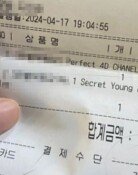The paintings of the Romance of the Three Kingdoms restored
The paintings of the Romance of the Three Kingdoms restored
Posted May. 04, 2016 07:33,
Updated May. 04, 2016 07:40
The name of “Dongmyo,” the name of a station of Seoul Subway Line 1, stems from the “Dong Gwan Wang Myo,” a shrine honoring Guan Yu, a Chinese general from the fictional Romance of Three Kingdoms. It was made in 1602 and is unique cultural heritage of the Joseon Dynasty with a Chinese touch on the sides and in the shape of the roof of the shrine made of bricks.
It was built after the Emperor of China’s Ming Dynasty sent gold coins, saying, “Build a shrine to honor Guan Yu who helped your country during the Japanese invasion in 1592.”
Although the shrine had many paintings on the Romance of the Three Kingdoms depicting famous scenes of the historical novel, many disappeared during the Japanese colonial rule. The National Folk Museum of Korea confirmed seven paintings on the novel while treating the relics donated by late Professor Kim Tae-gon for preservation for two years. Some of them are estimated to have been hung on the walls of the shrine.
After publishing a series based on its research, the museum holds a special exhibition with 20 paintings including five paintings on the Romance of the Three Kingdoms.
The museum found the fact that the paintings donated by Kim were the paintings on the Romance of the Three Kingdoms of the shrine from the “Art History of Joseon,” a collection of photos published by German author Andre Eckhardt in the 1920s. The book shows pictures of the paintings on the Romance of the Three Kingdoms taken at the shrine and they were consistent with Kim’s donations. In addition, it was found that the blue ink around the paintings were the same one as the ink used for the pillars of the structure of the shrine.
Moreover, the green ink of the paintings was turned out to be "Scheele’s Green," an ink developed in Sweden in 1775 and used in Asia in the late 1990s, which shows that the paintings were drawn in the period. The special exhibition ends on July 4.
김상운 기자sukim@donga.com







